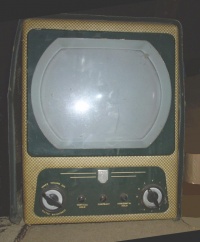Appliance energy saving
The reduced energy use never pays back the added purchase price on a new LCD TV.
How would you go about calculating that ?
First you need to know the power consumption of the 2 sets you want to compare. The label on the set indicates the max consumption, and figures can be calculated from those. If you want more precision, you'd hook the 2 upto an energy consumption meter (killawatt etc) and measure their consumption exactly.
Example:
Say a CRT TV eats 100w and you watch it for 2 hr per day. (I'm picking easy figures)
- Consumption = 0.1kW x 2hrs = 0.2kWh per day = 73kWh / yr
- Price of electricity = 12p/kWh
- So annual energy cost = 73 x 12p = £8.76 / yr
- If typical life expectancy of appliance = 8 yrs, thats £70 of electricity per life of the product.
Now compare an LCD with 70w consumption
- elec cost = £6.13/yr = £49/ 8yrs
- Difference = 70-49 = £21
The purchase price is greater than the electricity saving, so the LCD never pays its savings back.
In practice the figures are more in favour of the CRT set. Most LCD TVs & monitors consume the same power regardless of program content, CRT power consumption varies according to picture brightness, thus is below max rating a lot of the time.
